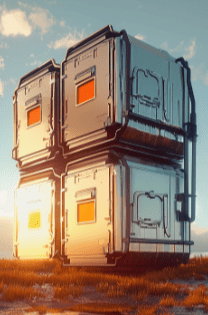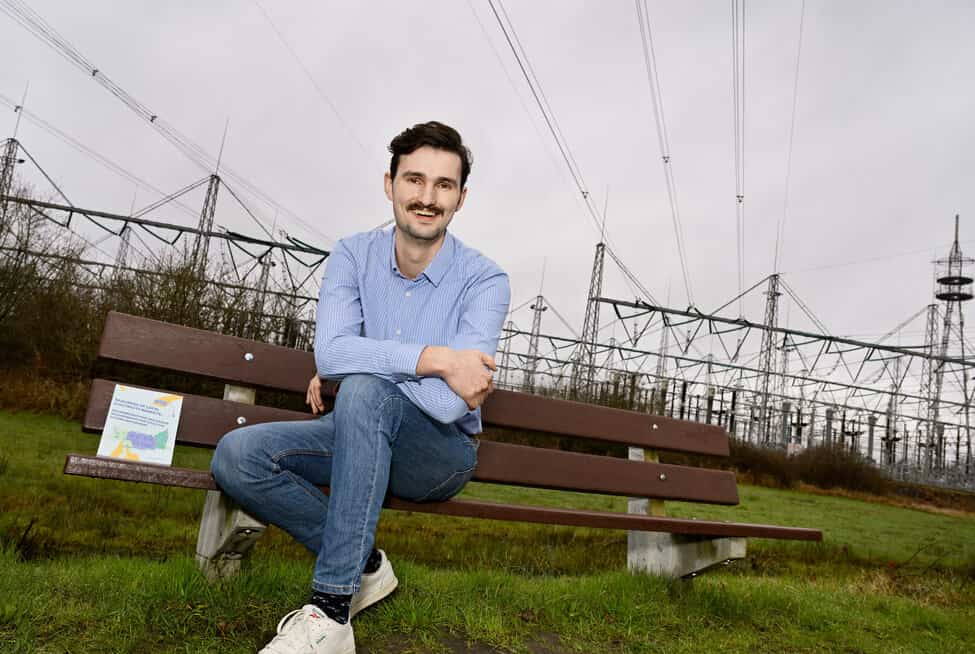
Energy storage plays a crucial role in the energy system of the future. The number of applications for large storage facilities, which can stabilise the grid, increased sharply last year. That will continue this year, expects Jeroen Neefs, director of Energy Storage NL. But that does not mean we are there yet. The Netherlands faces major challenges. “Financing and preconditions for battery operators need to improve.”
Why you need to know this:
Energy storage plays a crucial role in the transition to a green future. Therefore, it must be well regulated in the Netherlands.
Grid operator TenneT calculated that the Netherlands will need around nine gigawatts of flexibility via storage capacity by 2030 to meet energy supply. Between 150-200 MW has now been realised in the Netherlands.
BESS systems, or Battery Energy Storage Systems, are used to store electrical energy. These large-scale systems play an important role in stabilising the power grid by absorbing peaks in the grid. They can also mitigate problems around grid congestion. Different types of batteries are used for this purpose, such as lithium-ion, lead-acid or flow batteries, depending on the specific application and requirements.
The number of applications from battery operators has skyrocketed in the past year. Dozens of parties want to start projects in which they store gigawatts of energy. “And I expect this number to increase further in the coming year,” says Neefs.
Recently, the largest battery energy storage system in the Netherlands was commissioned. Located in the Vlissingen-Oost energy hub is Semperpower’s system, with a capacity of 30.7 megawatts and an energy storage capacity of 62.6 megawatt hours: that is roughly equivalent to the energy usage of 15,000 households for a full day.
This is an article from our magazine IO Next: Energy Storage. In the puzzle of our new energy system, balancing supply and demand for energy is the greatest challenge. And that’s why we dedicate this magazine to that crucial puzzle piece.

Challenges around energy storage
Storage projects like this are much needed. Because one thing is certain: whether we are talking about battery, molecule or thermal storage, existing or innovative ways of storing, the Netherlands will have to pull out all the stops to make its energy system future-proof.
“We are only at one percent of what we think we will need in 2030,” says Neefs. “In the coming years, we need to expand our storage by a factor of fifty if we want to achieve 9 GW.” It is a race against the clock.
However, there are still many obstacles to overcome before storage systems can be widely deployed, the director explains. Setting up a new project takes years. As Tennet shows in its position paper, more than 200 storage projects – some of them for more than a year – are already waiting for clarity from the grid operator. “To help the Ministry of Economic Affairs and grid operators, we are conducting surveys to find out exactly what obstacles companies are facing, and how we can speed up the processes around permits, for example,” Neefs explains.
A second obstacle for battery operators is the cost of transporting power across the grid. “If we compare the situation in the Netherlands with other countries, there is an uneven playing field. Battery companies in the Netherlands have to pay to transport power over the high-voltage grid. TenneT proposes to give up to 65 percent discount. Without a discount, transmission tariffs determine more than 80 percent of operational costs.

That runs into millions of euros for some projects. However, Energy Storage NL has been calling for these tariffs to be scrapped for several years to tackle congestion on the power grid. In Belgium and Germany, for example, there is a 0 percent tax rule. This makes it more attractive to set up your storage system abroad than in the Netherlands. TenneT is now working on a new proposal, which should be ready in the spring.
More and more standards and norms are also being developed regarding safety, battery recycling and cybersecurity. A real challenge, but “that’s positive because that means the market is ‘maturing’. We certainly won’t have to be bored in the coming years.”
Innovative storage systems
Despite the obstacles, we are currently experiencing a wave of innovation. Lithium-ion batteries continue to dominate, but more and more innovative solutions are coming to the market, such as flow batteries. These can store larger amounts, and also longer, of energy.
Dutch start-up AquaBattery is working on this type of battery. These operate on saltwater. The BlueBattery, for example, charges by separating diluted salt water into concentrated salt water and fresh water using electrodialysis. Electricity is extracted from the battery by recombining the freshwater and saltwater, using reverse electrodialysis. This process produces direct current. The start-up’s batteries are in the test/demonstration phase, but could mean a lot to the Dutch energy system in the future.
Neefs: “The lithium-ion battery is currently produced in large numbers in China. But innovative battery technologies offer opportunities for Europe and the Netherlands in particular. If we seize these opportunities, we could well become frontrunners.”








